Main Content
In addition to the specialty crops research, members of the RAPS Team are also studying the effects of Agrivoltaic systems on soybean production at RAREC in southern New Jersey. Last fall, on Oct 6, 2023, a rye (variety not stated) cover crop was established at 2 bu./A and terminated this spring on April 29 with Round-up at 1 qt/A. On June 9, pre-plant fertilizer (14-4-14) at 60 lbs/N per acre was broadcasted and soil was worked prior to soybean seeding. On 11 June, soybeans (AG42XF1, ASGROW) were seeded at a rate of 160,000 seed/A in each of two AV blocks each containing a double panel AV system, single panel AV system, and no panels (the same AV layout as the specialty crop study). On June 12, a pre-emergent herbicide application of Lorox at 1.0 lb/A + Dual Magnum at 1.0 pt/A was applied.


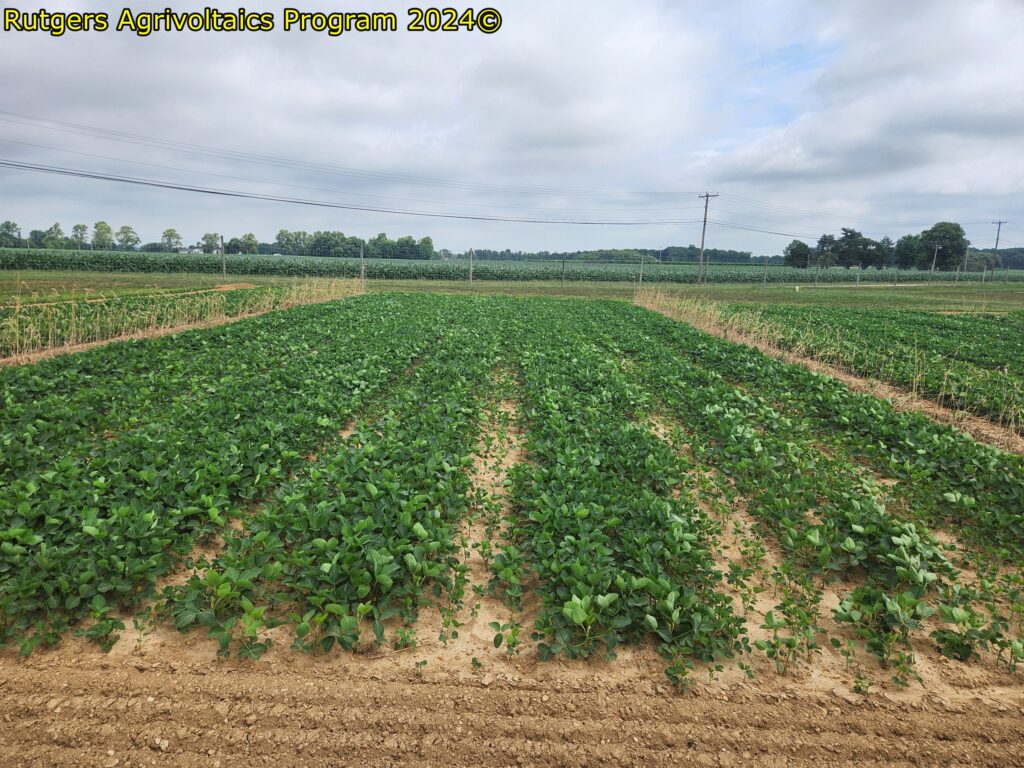
Figure 1. Soybean production under a 2 panel AV array (on left), single panel AV array (middle), and no panel (conventional) system (on right) at the Rutgers Agricultural Research and Extension Center (RAREC) near Bridgeton, New Jersey.
Each block consists of a double panel array, single panel array , and no panel system. Each whole plot contains three rows of AV panels spaced 34 ft apart that are 74 ft long (4,736 total sq. ft). The distance (space) between each whole plot are 34 ft which act as a break. The area of each block is 272 ft long by 74 ft wide (20,128 sq ft or 0.462 A) (Figure 2).
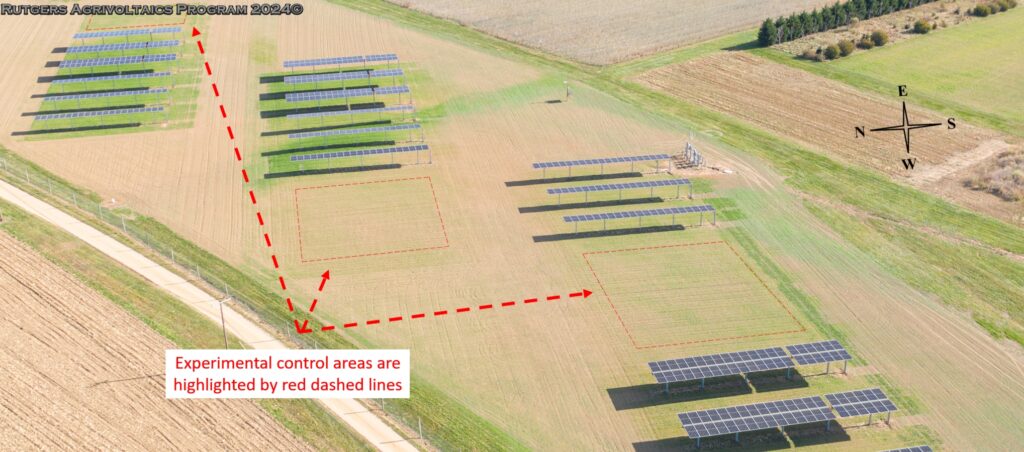
Figure 2. An aerial view of the Agrivoltaics system at RAREC near Bridgeton, NJ. The two blocks of AV panels on the left side of the image are currently planted in soybean. The block on the right is currently planted in specialty crops (eggplant, bell pepper, and fresh-market tomato).
Photo Gallery:
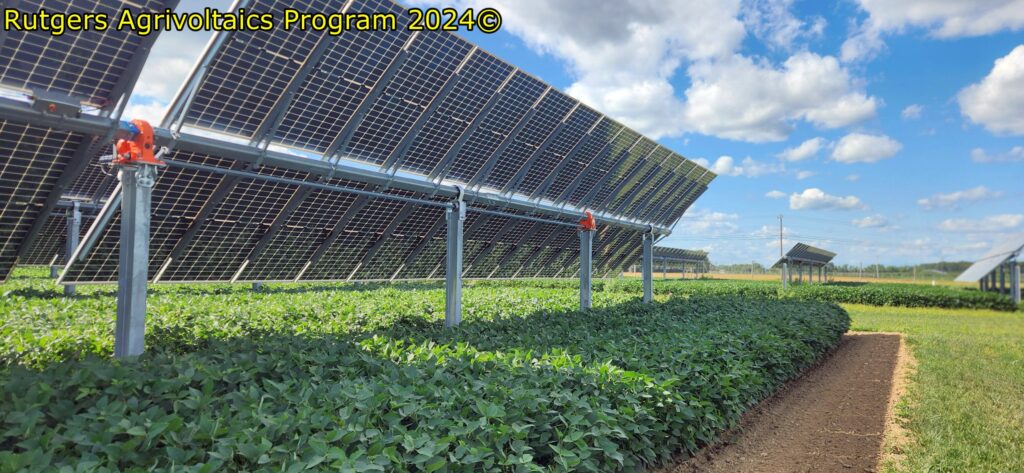
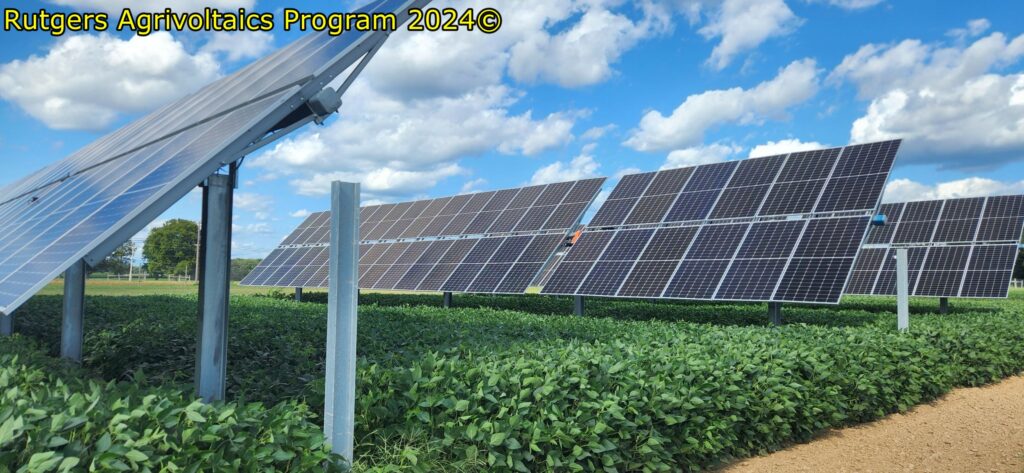
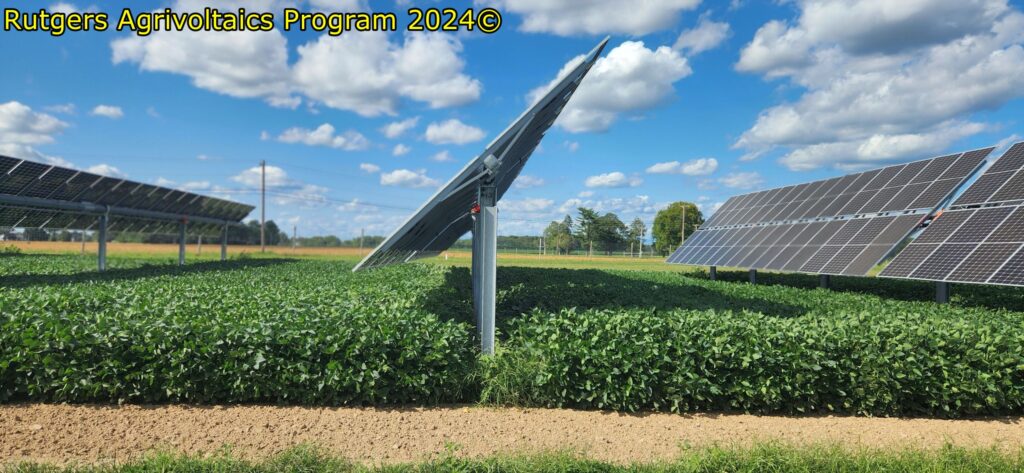
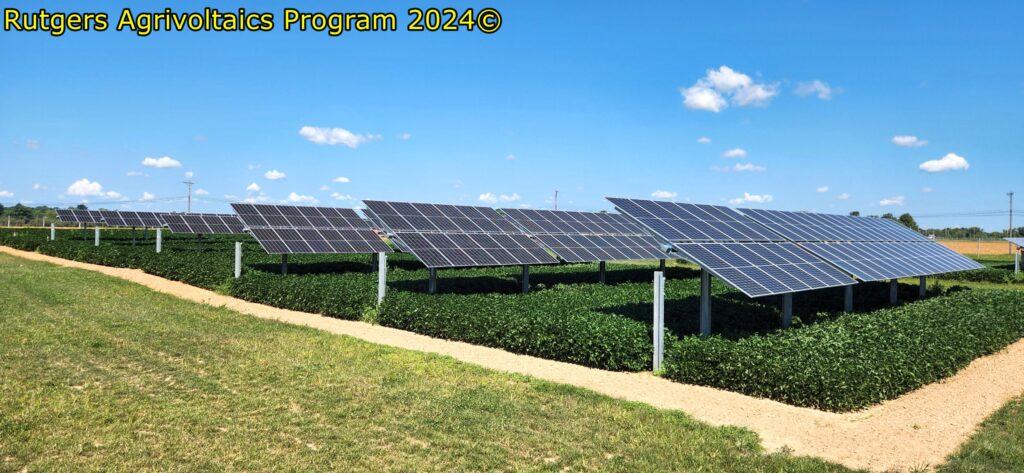
Articles and images can be used by Permission from the Rutgers RAPS Team only – For Permission contact RAPS at shawn.sorrels@rutgers.edu.
Discover more from Rutgers Agrivoltaics Program
Subscribe to get the latest posts sent to your email.